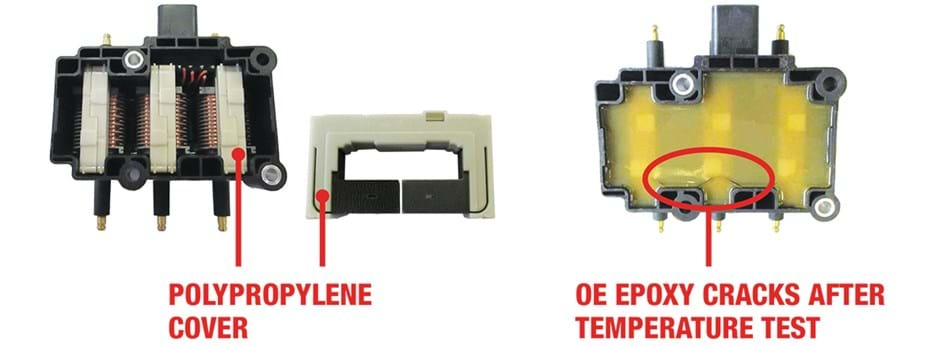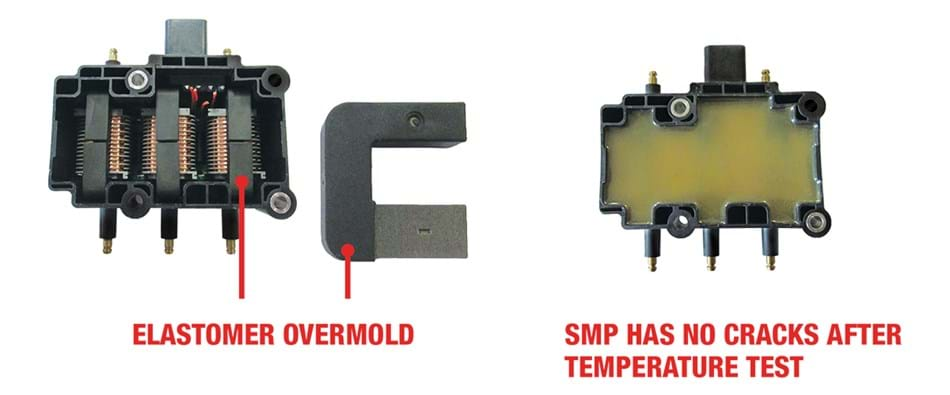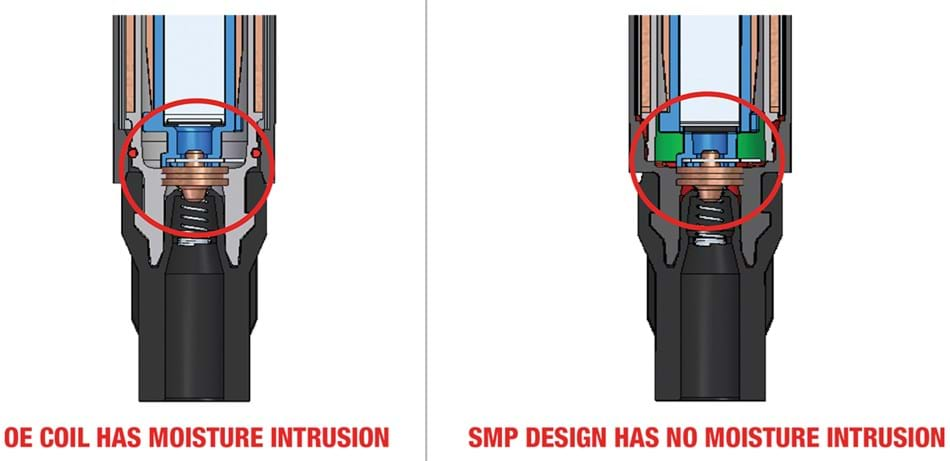OE Weak Points
The Weak Points in Many OE Coil Designs Lead to Product Failure
Our engineers identify the OE flaws
We design the BWD® coil to overcome these flaws
We manufacture a more reliable, better performing ignition coil
OE Design Flaw: Polypropylene Cover

The OE polypropylene cover on steel core leads to epoxy cracking, moisture intrusion, degraded performance and eventual coil failure.
SMP Solution: Elastomer Overmold

The BWD® design overmolds the iron core with TPE elastomer preserving coil integrity.
Source: SMP Poland Testing Lab, 2018
OE Design Flaw: Terminal Deforms

The OE metal terminal deforms while the epoxy cures causing the high voltage connection to fail.
SMP Solution: Spring Terminal Design

BWD® engineering features a spring terminal design to maintain a solid high voltage connection for top performance and long service life.

OE Design Flaw: O-ring Design
When the OE O-ring breaks down it allows moisture intrusion which impedes performance and shortens coil life.
SMP Solution: Eliminate O-ring Housing
The BWD® one-piece design with no O-ring housing prevents moisture intrusion, ensuring peak coil performance and long service life.
SMP designs improvements to numerous OE pencil coils
